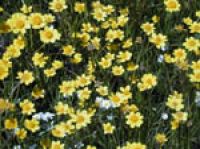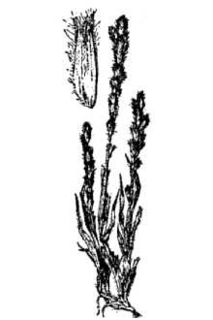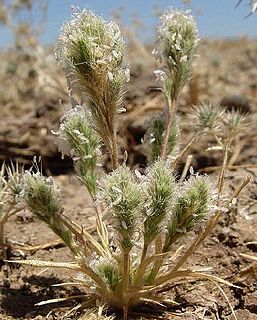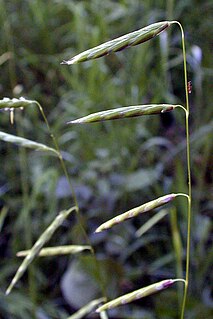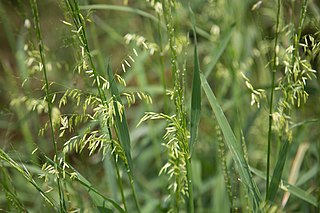| Poa napensis | |
|---|---|
 | |
| Scientific classification | |
| Kingdom: | Plantae |
| Clade: | Angiosperms |
| Clade: | Monocots |
| Clade: | Commelinids |
| Order: | Poales |
| Family: | Poaceae |
| Subfamily: | Pooideae |
| Genus: | Poa |
| Species: | P. napensis |
| Binomial name | |
| Poa napensis | |
Poa napensis is a rare species of grass known by the common name Napa bluegrass. It is endemic to Napa County, California, where it is known from only two occurrences near Calistoga. It grows in moist, mineral-rich soil around hot springs. The rare grass only occurs on private, unprotected land and depends on water from the hot springs; changes to the local water regime or any other aspects of its specific habitat type would affect the plant. [1] This grass was federally listed as an endangered species in 1997, along with another rare local hot spring endemic, the Calistoga popcornflower (Plagiobothrys strictus). [1]

Poaceae or Gramineae is a large and nearly ubiquitous family of monocotyledonous flowering plants known as grasses, commonly referred to collectively as grass. Poaceae includes the cereal grasses, bamboos and the grasses of natural grassland and cultivated lawns and pasture. Grasses have stems that are hollow except at the nodes and narrow alternate leaves borne in two ranks. The lower part of each leaf encloses the stem, forming a leaf-sheath. With around 780 genera and around 12,000 species, Poaceae are the fifth-largest plant family, following the Asteraceae, Orchidaceae, Fabaceae and Rubiaceae.

Endemism is the ecological state of a species being unique to a defined geographic location, such as an island, nation, country or other defined zone, or habitat type; organisms that are indigenous to a place are not endemic to it if they are also found elsewhere. The extreme opposite of endemism is cosmopolitan distribution. An alternative term for a species that is endemic is precinctive, which applies to species that are restricted to a defined geographical area.

Napa County is a county north of San Pablo Bay in the northern portion of the U.S. state of California. As of the 2010 census, the population was 136,484. The county seat is the City of Napa. Napa County was one of the original counties of California, created in 1850 at the time of statehood. Parts of the county's territory were given to Lake County in 1861.
This is a perennial grass forming dense clumps of somewhat waxy stems up to about a meter in maximum height. The inflorescence is an open array of thin branches bearing rough-haired, flattened, lance-shaped spikelets. The spikelets may be greenish to purple in color.

An inflorescence is a group or cluster of flowers arranged on a stem that is composed of a main branch or a complicated arrangement of branches. Morphologically, it is the modified part of the shoot of seed plants where flowers are formed. The modifications can involve the length and the nature of the internodes and the phyllotaxis, as well as variations in the proportions, compressions, swellings, adnations, connations and reduction of main and secondary axes. Inflorescence can also be defined as the reproductive portion of a plant that bears a cluster of flowers in a specific pattern.


